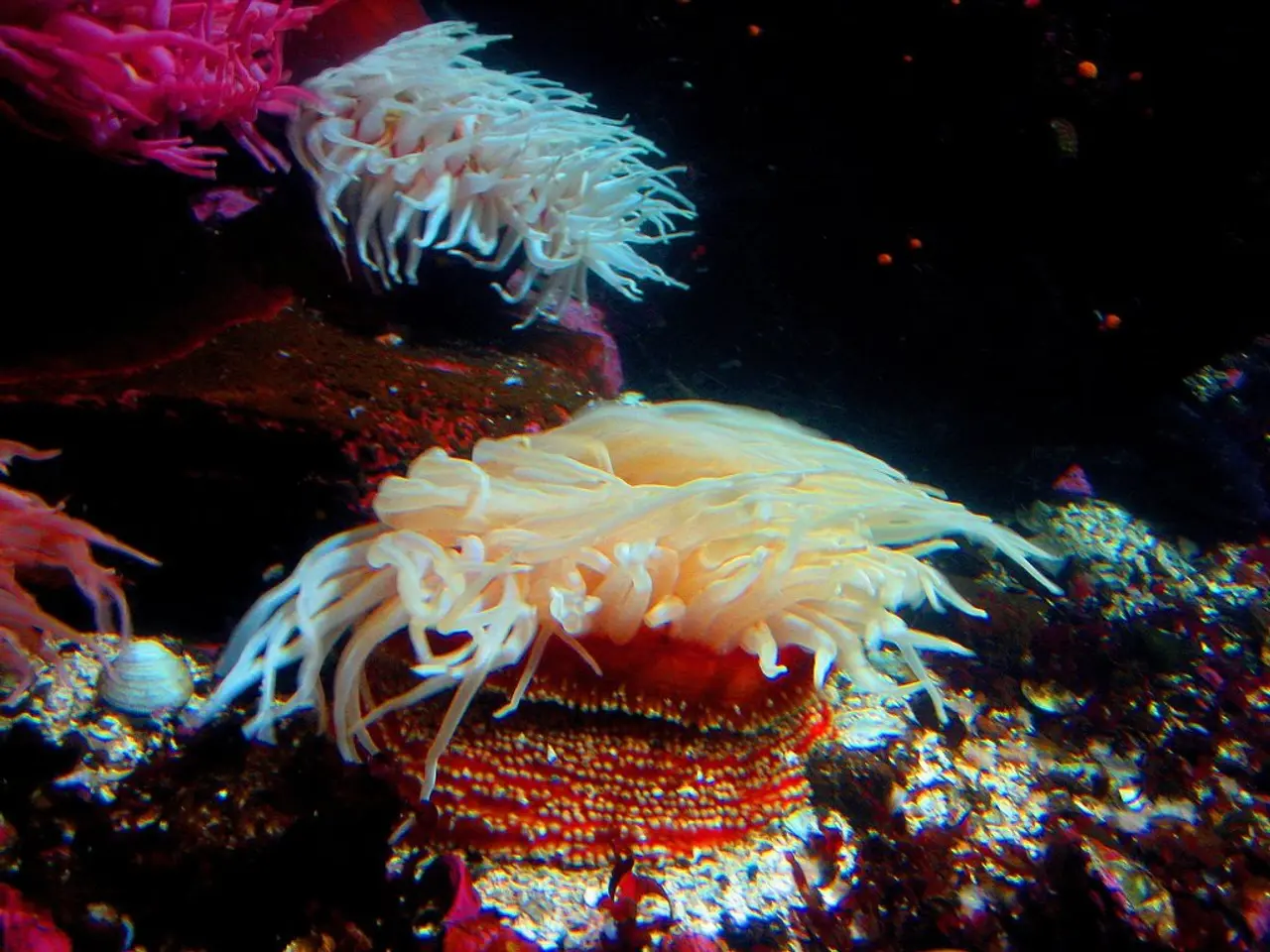Breathtaking Underwater Find - Divers Unearth the Gigantic Subaquatic Organism Known To Date, Previously Active During Napoleon's Era
In the waters surrounding the Solomon Islands, a remarkable discovery has been made. Marine biologists, working alongside independent underwater explorer Manu San Félix, have confirmed the existence of a colossal coral colony at a site known as Three Sisters. This coral formation, measuring approximately 34 meters wide, 32 meters long, and 5 to 6 meters high, is a sight to behold and has captured the attention of marine scientists worldwide.
Initially mistaken for a shipwreck due to its irregular, layered structure, the coral colony was later identified as a living entity composed entirely of the stony coral species Pavona clavus. This is significant because Pavona clavus is not typically seen in such large-scale formations. The sheer surface area and density of the coral colony place it in a category of its own.
El Diario 24 reported the discovery, noting that researchers are now aiming to identify traits in the coral colony that could inform conservation strategies. They suspect that the colony's resilience could prompt discussions about what can be learned from its longevity. The coral colony, believed to have existed since the time of Napoleon Bonaparte, has survived centuries of oceanic change.
However, the coral reef ecosystem faces numerous threats, with climate change being the leading factor behind its degradation globally. Rising ocean temperatures contribute to widespread coral bleaching, where symbiotic algae are expelled, weakening the coral and often leading to its death. Additionally, human activity, such as the testing of deep-sea equipment, can also damage fragile reef environments.
Despite the essential role of technological advancement for further exploration, researchers acknowledge that these practices often result in unintended ecological costs. As such, they are treading carefully in their investigation of the coral colony at Three Sisters.
The discovery provides a living timeline of environmental change that could serve as a reference for understanding coral ecosystem dynamics over long periods. The coral colony may have developed special adaptations or genetic mutations allowing it to survive while other coral systems in similar regions have degraded or disappeared entirely. This offers a unique opportunity to study the mechanisms of evolutionary endurance and ecological adaptability.
As the world grapples with the challenges of preserving coral reefs, the discovery at Three Sisters offers a glimmer of hope. The coral colony's resilience and longevity serve as a testament to the strength and adaptability of these vital marine ecosystems. The findings could inform conservation strategies and inspire further research into the mysteries of coral reefs and their role in our planet's health.
Read also:
- European transportation's sustainability and competitiveness rely on a "green industrial agreement" that serves the interests of both corporations and residents, as discussed in an Editorial from August 2024.
- Indian Oil Corporation's Panipat Refinery secures India's inaugural ISCC CORSIA accreditation for Sustainable Aviation Fuel production
- Porsche Macan Accelerates into Second Generation of Electric Power
- Increasing Trend Downthe Globe: A Growing Number of Individuals Opt for Electric Vehicles Over Long Distances







